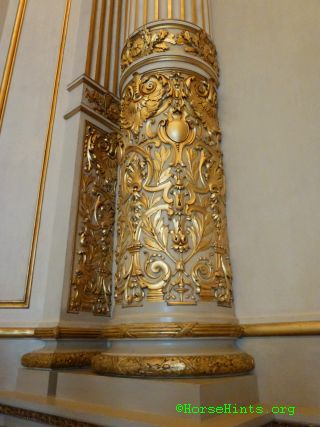| Home Travel Index | First Posted: Apr 6, 2012 Jan 21, 2020 | |
|
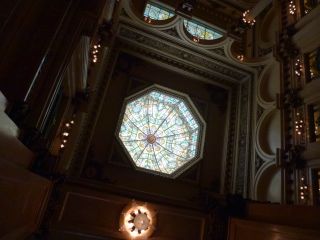 |
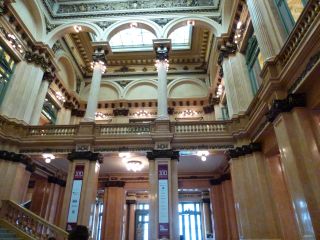 |
 |
 |
 |
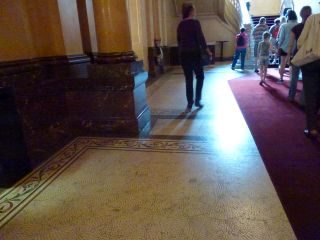 |
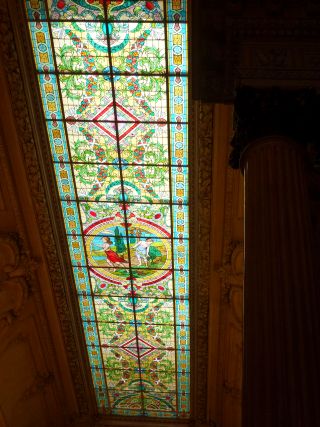 |
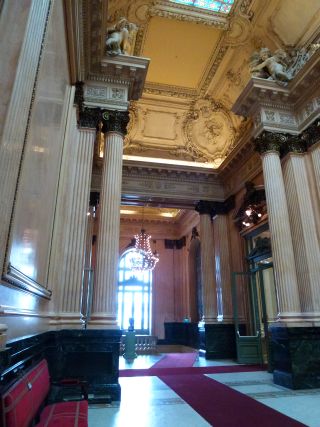 |
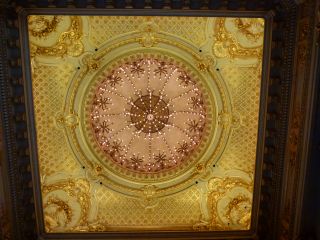 |
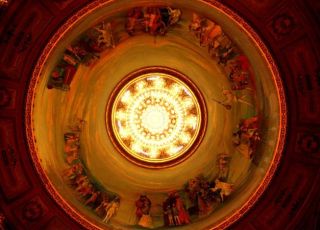 |

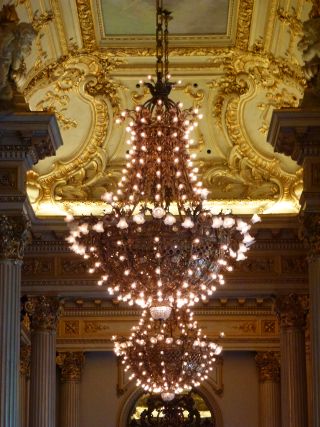
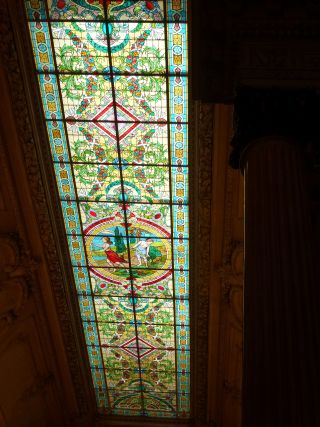
Location: Buenos Aires, Argentina
Construction started: 1889
Completed: 1908
Height: 28 metres
Technical details: Structural system- Concrete
Diameter: 58 metres
The Teatro Colón (Spanish) (Columbus Theatre) is the main opera house in Buenos Aires, Argentina, acoustically considered to be amongst the five best concert venues in the world. The present Colón replaced an original theatre which opened in 1857. Towards the end of the century it became clear that a new theatre was needed and, after a 20-year process, the present theatre opened on May 25, 1908, with Giuseppe Verdi's Aïda. The Teatro Colón was visited by the foremost singers and opera companies of the time, who would sometimes go on to other cities including Montevideo, Rio de Janeiro and São Paulo. After this period of huge international success, the theatre's decline became clear and plans were made for massive renovations. After an initial start of works to restore the landmark in 2005, the theatre was closed for refurbishment from October 2006 to May 2010. It re-opened on May 24, 2010, with a program for the 2010 season.
The first Teatro ColónBy the mid-1850s, with the flourishing of opera performed by touring companies, the need for a new theatre became obvious. In 1854 alone, 53 different operas were performed in the city. The first Teatro Colón building, overlooking Plaza de Mayo, was started in 1856 and opened on April 27, 1857, with Verdi's La traviata, just four years after its Italian premiere. The production starred Sofia Vera Lorini as Violetta and Enrico Tamberlik as Alfredo. The theatre was designed by Charles Pellegrini, and proved to be a successful venue for over 30 years, with 2,500 seats and the inclusion of a separate gallery reserved only for women.
Before the construction of the current Teatro Colón, opera performances were given in several theatres, of which the first Teatro Colón and the Teatro Opera were the most important. The principal company that performed at the Teatro Opera moved to the Teatro Colón in 1908. However, important companies also performed at the Teatro Politeama and the Teatro Coliseo which opened in 1907.
The Present Teatro Colón
Characteristics
The theatre is bounded by the wide 9 de Julio Avenue (technically Cerrito Street), Libertad Street (the main entrance), Arturo Toscanini Street, and Tucumán Street. It is in the heart of the city on a site once occupied by Ferrocarril Oeste's Plaza Parque station. The auditorium is horseshoe-shaped, has 2,487 seats (slightly more than the Royal Opera House in Covent Garden, London), standing room for 1,000 and a stage which is 20 m wide, 15 m high and 20 m deep. The Colon's acoustics are considered to be so good as to place it in the top five performance venues in the world. Luciano Pavarotti held a similar opinion.
Opening and Subsequent History
The present theatre, the second with that name, opened on May 25, 1908, after twenty years under construction, and was inaugurated with Aida by the Italian company directed by Luigi Mancinelli and tenor Amadeo Bassi, soprano Lucia Crestani (as Aida). The second performance was Thomas' Hamlet with the baritone Titta Ruffo. During the inaugural season seventeen operas were performed with famous stars such as Ruffo, Feodor Chaliapin in Boito's Mefistofele, Antonio Paoli in Verdi's Otello....
The cornerstone of the present Teatro Colón was laid in 1889 under the direction of architect Francesco Tamburini and his pupil, Vittorio Meano, who designed a theater in the Italian style on a scale and with amenities which matched those in Europe. However, delays followed due to financial difficulties, arguments regarding the location, the death of Tamburini in 1891, the murder of Meano in 1904 and the death of Angelo Ferrari, an Italian businessman who was the financing the new theatre. The building was finally completed in 1908 under the direction of the Belgian architect Julio Dormal who made some changes in the structure and left his mark in the French style of the decoration. The bas-reliefs and busts on the facade are the work of sculptor Luigi Trinchero.
The theatre's opening on May 25, the Día de la Patria in Argentina, featured a performance of Verdi's Aida and it quickly became a world-famous operatic venue rivaling La Scala and the Metropolitan Opera in attracting most of the world's best opera singers and conductors. Ballet stars performed at the Colón alongside Argentine dancers and classical instrumentalists. The tragic 1971 aviation death of two of the best known of these, Norma Fontenla and José Neglia, was commemorated with a monument in neighboring Lavalle Square.
With excellent acoustics and modern stage areas, the theatre's interior design features a rich scarlet and gold decor. The cupola contains frescoes painted in 1966 by the 20th-century artist Raùl Soldi during renovation work.
Refurbishment, 2005-2010
In recent years, given the political and economic circumstances of Argentina, the Colón Theatre has suffered considerably, but a period of slow recovery began. The theatre underwent massive phased remodeling of both interior and exterior, initially while the house was still open, but production activities ceased at the end of October 2006 to allow full refurbishment.
Initially, "what had been planned as an 18-month, $25-million renovation with 500 workers, scheduled for a May 2008 reopening with Aida, became a three-year $100-million extravaganza with 1,500 workers including 130 professional architects and engineers." In addition, an exterior open-air stage was planned for an opening in 2011. In all, 60,000 square metres (645,835 sq. ft.) underwent updating, both inside and out.
Some of the last performances immediately before closure of the theatre's building were Swan Lake on 30 September with the Ballet Estable del Teatro Colón and the Buenos Aires Philharmonic (Orquesta Filarmónica de Buenos Aires) and, on 28 October, the opera Boris Godunov was given featuring Orquesta Estable del Teatro Colón and the house chorus.
The theatre's final performance before its closure for refurbishment works in 2005 was a concert on November 1 starring folklore singer Mercedes Sosa in performance with the Argentine National Symphony Orchestra, conducted by Pedro Ignacio Calderón.
While it was originally planned to reopen in time for the centenary on 25 May 2008, delays prevented this, and the house was finally reopened with a gala concert and 3D animations on 24 May 2010, the eve of its own 102nd birthday and the Argentina Bicentennial. Tchaikovsky's Swan Lake and Act 2 of Puccini's La bohème were performed. A private concert to test the acoustics attended by employees, architects, and others involved in the renovation occurred on 6 May 2010.
Note of Interest: During our tour it was pointed out that before the Opera House was renovated smoking was allowed. The column on your left shows a dark area toward the bottom and bottom left. It is the residue from the smoke that took a toll on the entire interior of the Opera House. That was not cleaned during the renovation to be able to show the comparison. The rest of the column was cleaned. The column on your right is a cleaned column.

